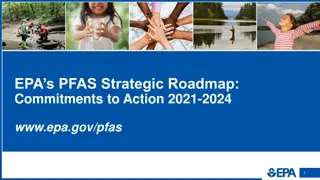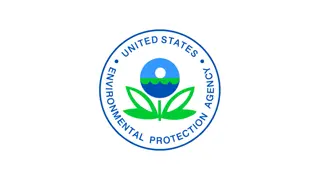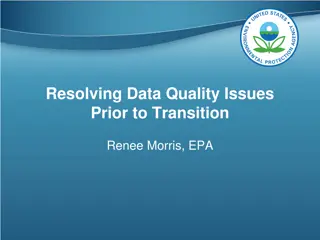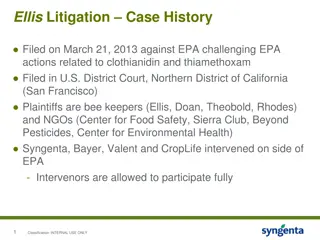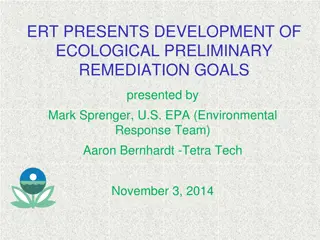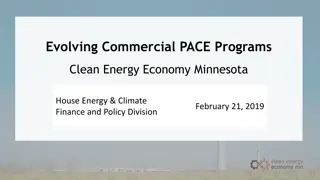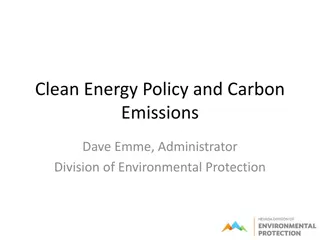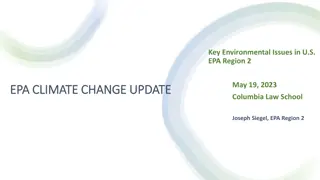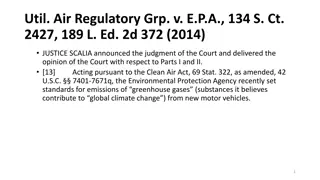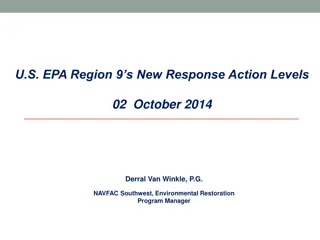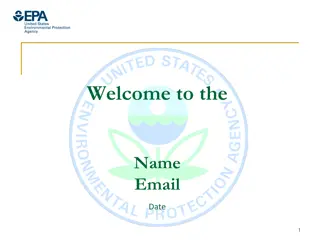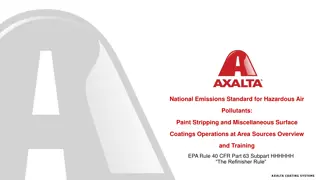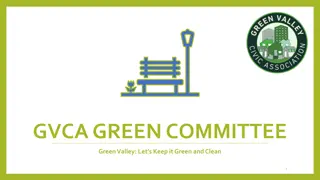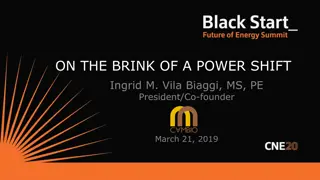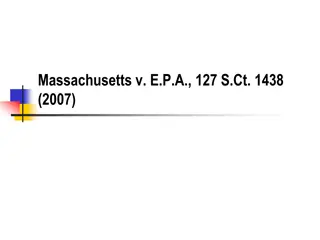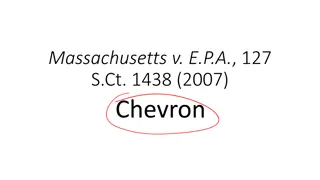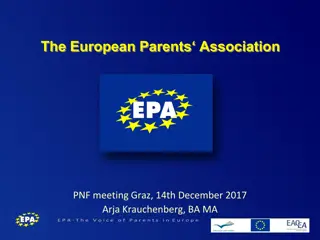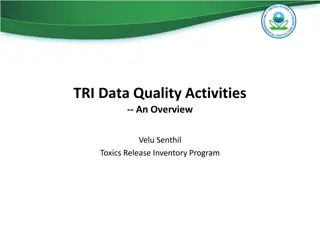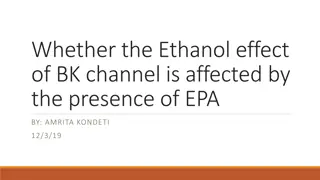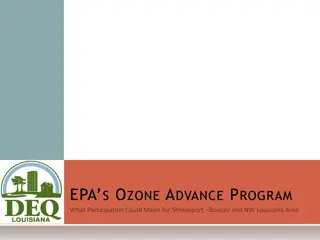Clean Power Plan and US EPA Regulations Overview
The Clean Power Plan aims to boost the economy, protect public health, and fight climate change through reducing carbon dioxide emissions. The US EPA is proposing rules to implement the plan, which includes setting state emission reduction goals and promoting renewable energy and energy efficiency. Learn about the plan's purpose, proposed rules, building blocks, and goals outlined for renewable energy and energy efficiency.
Download Presentation

Please find below an Image/Link to download the presentation.
The content on the website is provided AS IS for your information and personal use only. It may not be sold, licensed, or shared on other websites without obtaining consent from the author.If you encounter any issues during the download, it is possible that the publisher has removed the file from their server.
You are allowed to download the files provided on this website for personal or commercial use, subject to the condition that they are used lawfully. All files are the property of their respective owners.
The content on the website is provided AS IS for your information and personal use only. It may not be sold, licensed, or shared on other websites without obtaining consent from the author.
E N D
Presentation Transcript
Clean Power Plan Clean Air Act Section 111(d) 1
Clean Power Plan Purpose Boost the economy Spark investment in clean power Maintain an affordable, reliable energy system. Lead to health & climate benefits worth an approx. $55 -$93 billion in 2030. Protect public health and environment Cut harmful particle pollution, sulfur dioxide and nitrogen oxides as a co-benefit. Provide important health protections to the most vulnerable. Every $1invested through the Clean Power Plan will yield up to $7 in health benefits. Fight climate change By 2030, reduce nationwide carbon dioxide (CO2) emissions, from the power sector by approximately 30% from 2005 levels. 2
US EPA Proposing Rules to Implement Clean Power Plan 1. Called for in President s Climate Action Plan 2. EPA had and continues strong outreach US EPA expecting millions of comments! 3. Accepting public comment on plan through 10/16/14 Question for Environment Committee- Should we comment on the plan? 4. Final plan due 6/1/15 5. Illinois submits plan to USEPA 6/1/16 Extensions allowed for legislative and regional approaches 3
Draft Clean Power Plan Rules Only: 1. Sets individual state CO2 emission reduction goals Expected to be 33% reduction in CO2 emission rate by 2030 Rate = lbs CO2/MWh from existing, affected fossil-fueled fired sources 2. Provides framework for the development of state plans Framework provides flexibility for state plans 4
4 Building Blocks 4 Building Blocks Improvements at Coal-Fired Power plants Re-dispatch to High Efficiency Natural Gas Combined Cycle New Renewable Energy & Nuclear Energy Efficiency (EE) Inside the Fence-Line Demand-side EE Outside the Fence-Line 5 5
Step 4 Building Block 3 Building Block Goal (lbs % Reduced Cumulative % CO2/MWh) BB #3 New Renewable Energy (RE) & Nuclear Baseline 1,895 1 1,784 6% 6% 2 1,614 9% 15% 3 1,476 7% 22% 4 Total Build new RE and Nuclear - 115% increase in RE by 2030 - 4% of IL generation in 2012 to 9% in 2030 7% 6
Step 5 Building Block 4 Building Block Goal (lbs % Reduced Cumulative % CO2/MWh) BB #4 Energy Efficiency (EE) Baseline 1,895 Demand-side EE 1 1,784 6% 6% 2 1,614 9% 15% 3 1,476 7% 22% 4 1271 11% 33% Total 33% Increase demand-side EE results in avoided generation from affected coal and other fossil-fuel EGUs 11.6% increase in EE (avoided generation) + 0.9% line loss improvement 11% 11% 7
Goal Building Block Goal % Reduced Cumulative % Cumulative % (lbs CO2/MWh) Unadjusted Baseline 2,189 0 Baseline 1,895 13% 1 1,784 6% 6% 5.5% (18.5%) 2 1,614 9% 15% 5.5% (24%) 3 1,476 7% 22% 8% (32%) 4 1,271 1,271 11% 33% 33% 33% 10% (42%) 42% Total 1 2 3 4 8
Illinois Background (cont.) 2012 Net Electricity Generation Generation Source Percent of Total Nuclear 49% Coal-Fired 41% 6% Natural Gas- Fired Renewable Energy 4% 9
Illinois Power Background 17 coal-fired power plants 17,000 MW Variety: 4 to > 60 years old 74 MW to > 800 MW Variety of coal types most are well-controlled. 30 Natural-gas fired plants 3 of which are Natural Gas Combined Cycle (NGCC), ~ 2,230 MW 6 Nuclear Plants, ~ 12,000 MW 10
111(d) 111(d) State Plan Development State Plan Development Facilitator, Collaborative Groups Power Plants/Affected Sources Governor s Office DCEO -EEPS Environmental Groups/NGO s -Demand-Side EE -RE IEPA RTOs & ISOs: -PJM -MISO -Inside the fence-line requirements -Plan Assembler & Submitter Legislative Liasion -EEPS -RPS -Clean Energy IPA RPS ICC -Re-dispatch to NGCC -RPS -RE -Enforcement Clean Energy Providers: RE + EE Utilities/Distributors: -ComEd/Exelon -Ameren EE 11



